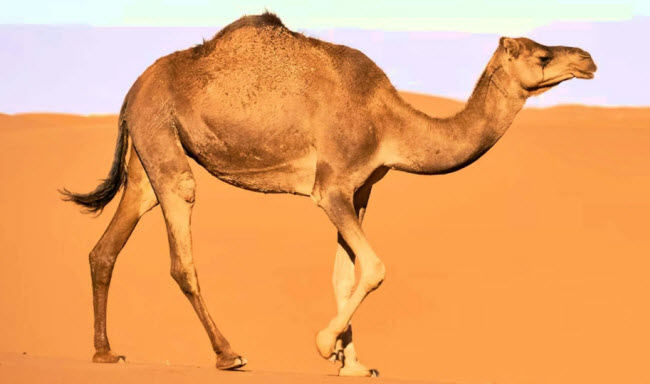The camel is a remarkable mammal known for its distinctive fat deposits called humps on its back. It has roamed the earth for approximately 3,000 years and is often referred to as the “ship of the desert” due to its legendary ability to endure long periods without food or water. This resilience makes camels indispensable for human transport across arid environments, where they can easily carry weights up to 90 kilograms and travel up to 32 kilometers a day in harsh desert conditions. Besides their role as transport animals, camels are also valuable livestock, providing wool, milk, meat, hides, and even dung, which can be used as fuel. There are two primary species of camels: the Arabian camel with a single hump, which comprises over 90% of the world’s camel population, and the Bactrian camel with two humps, which is less common and includes both domesticated and wild types, with the latter being critically endangered.
The camel’s humps store fat, not water as commonly believed. This fat serves as an energy reserve, enabling camels to survive without food for months and without water for up to a week. The size of the humps varies depending on the camel’s food intake; when food is scarce, the stored fat in the humps is used, causing them to shrink and sag. Remarkably, camels can endure a weight loss of up to 40% of their body weight and rehydrate by drinking up to 145 liters of water in one sitting.
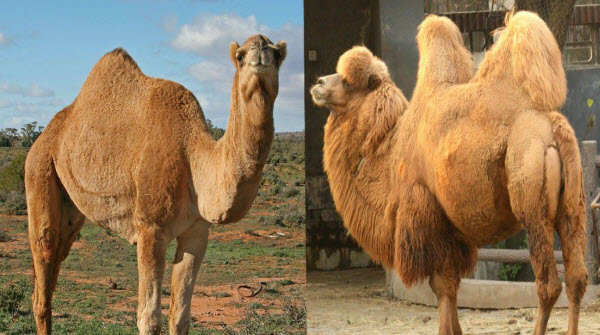
One of the camel’s less pleasant behaviors is its habit of spitting, which is often mistaken for an act of aggression. In reality, this is more akin to vomiting, as camels expel stomach contents mixed with saliva when they feel threatened or irritated. You can predict when a camel is about to spit by observing its cheeks as they swell. Despite their imposing size, Bactrian camels are vulnerable to attacks by wolves, particularly at water holes.
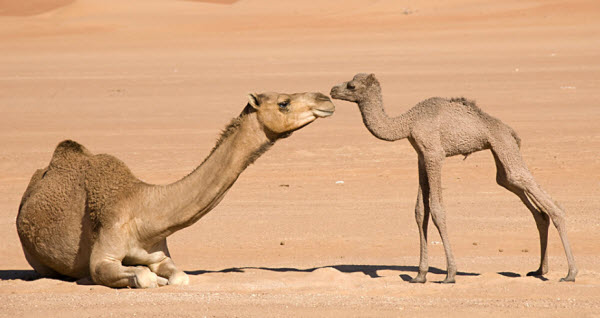
Bactrian camels are native to the Gobi Desert in China and the steppes of Mongolia. They have a shaggy coat in winter to protect them from the severe cold, which sheds in the hot summer. This species can endure extreme temperatures ranging from -29°C to 49°C. The domesticated Arabian camel is found across the desert regions of North Africa and the Middle East, with a significant population in Australia, introduced in the 19th century for desert transportation.
Camels have adapted uniquely to the sandy desert environment. Each eye is equipped with a thin membrane, acting as an internal transparent eyelid to protect against sandstorms while allowing enough light for vision. Long, double rows of eyelashes also help keep sand out of their eyes. Camels can close their nostrils to prevent sand from entering, and their large, wide, and firm feet spread when walking and contract when lifted, making movement over sand and snow easier.
As diurnal animals, camels spend their days foraging. They are highly skilled at locating food in their harsh desert habitat, with each half of their split upper lip moving independently, allowing them to graze on short grasses. Their tough, flexible lips also enable them to eat thorny, salty plants and even fish. Camels are ruminants like cows, regurgitating food to chew it again, a process that produces unpleasant-smelling gases, making breathing difficult.
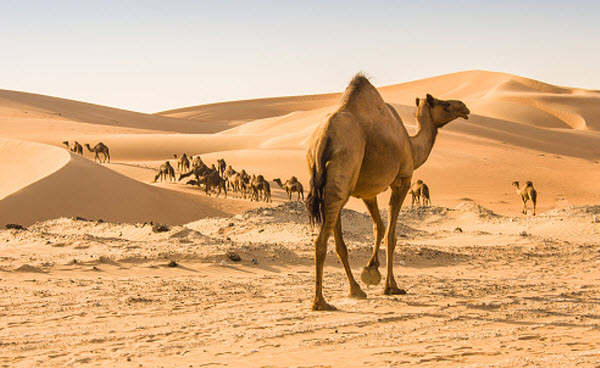
Camels are highly social animals living in herds with a dominant male while other males are driven away. They make a variety of sounds, including groans, high-pitched noises, loud snorts, and roars. Mother camels and their newborns communicate through low humming sounds. Friendly gestures include blowing in another camel’s face, while different head, neck, ear, and tail movements convey various messages within their social structure. For example, ears forward signal alertness, while a tail curled over the back indicates submission.
When a female camel is about to give birth, she leaves the herd to find a secluded spot covered with vegetation to deliver her calf after a gestation period of 12 to 14 months. The newborn calf can walk alongside its mother within half an hour, though it lacks a pronounced hump, which will develop over time. The calf returns to the herd within about two weeks, and the nursing period lasts from 10 to 18 months. Full maturity is reached around seven years of age.
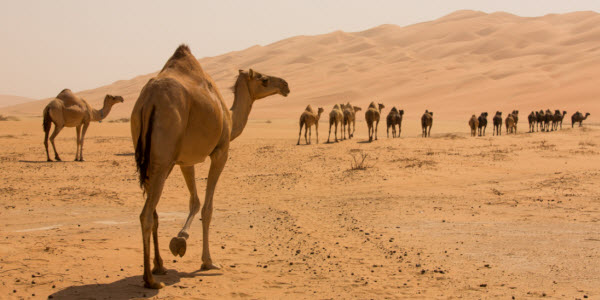
Humans have relied on camels since ancient times. They were introduced to Australia and the United States in the mid-19th century as potential transport animals across the western regions and as an alternative to cattle. Today, nomads in the African desert continue to depend on Arabian camels for milk, wool, and transport, maintaining a steady population. In contrast, Bactrian camels face severe threats from hunting, competition with other livestock for grazing areas, and illegal mining activities encroaching on their habitat. Currently, around 650 Bactrian camels exist in China and about 450 in Mongolia. To combat the risk of extinction, the Wild Camel Protection Foundation was established in 1997, creating a nature reserve in China for Bactrian camels.
Identification Card
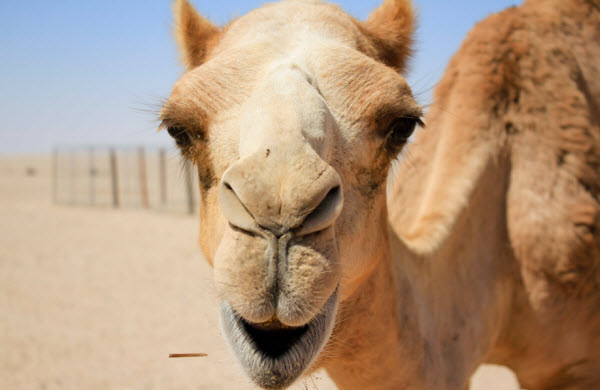
- Class: Mammals
- Order: Artiodactyls
- Family: Camelidae
- Average Lifespan: 17.8 years
- Gestation Period: 12 to 14 months
- Maturity: Females at 3 years, males at 5 to 7 years
- Height: Bactrian camels range from 3.2 to 3.5 meters tall at the shoulder, while Arabian camels are 2.2 to 3.4 meters tall.
- Weight: Bactrian camels weigh between 450 to 500 kg, while Arabian camels weigh between 400 to 600 kg.
- Tail Length: 70 to 105 cm
Quick Facts About Camels
- Camels can consume up to 9 kilograms of food in a single meal.
- During a chase, camels can reach speeds of up to 61 kilometers per hour.
- In the Arctic tundra, a camel’s roar can be heard from 16 kilometers away.
